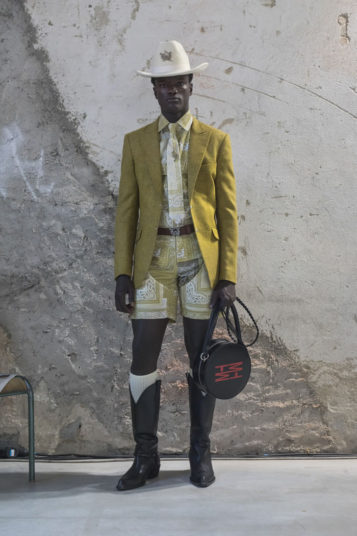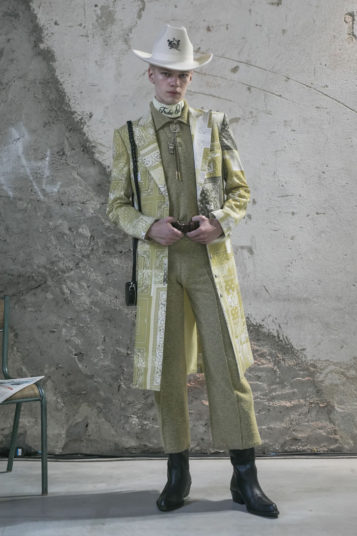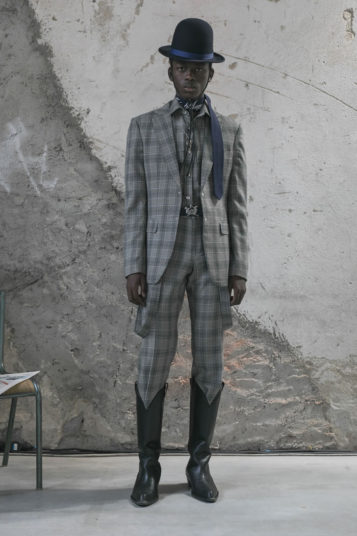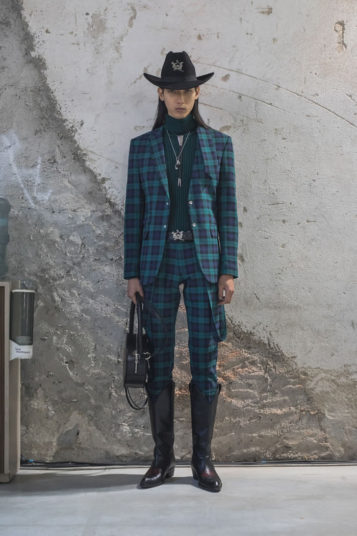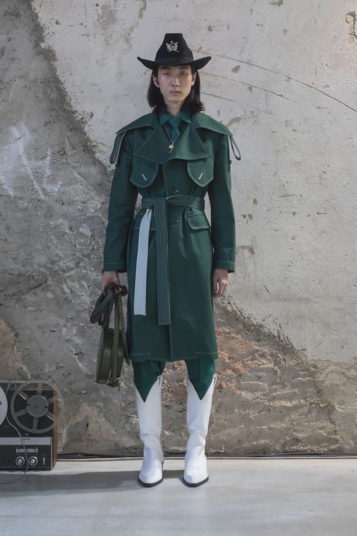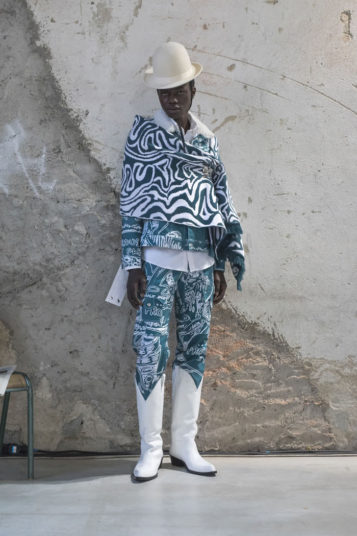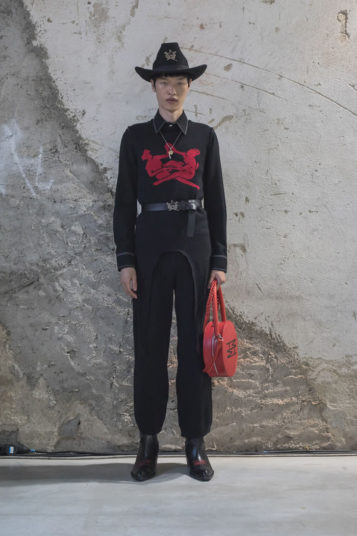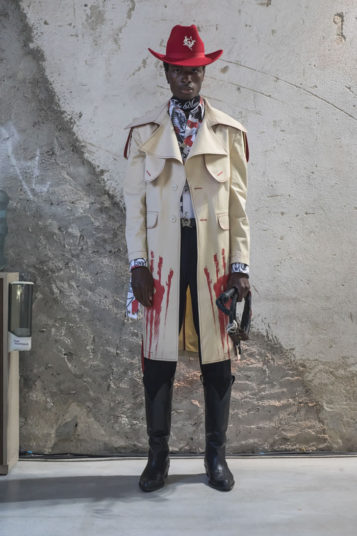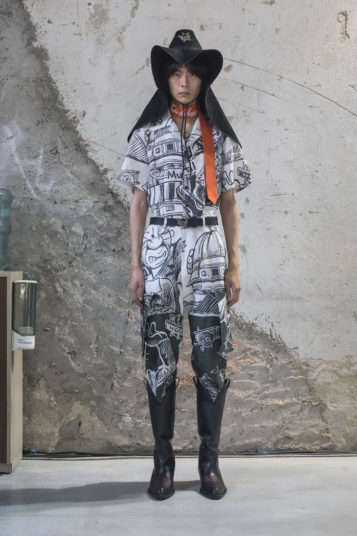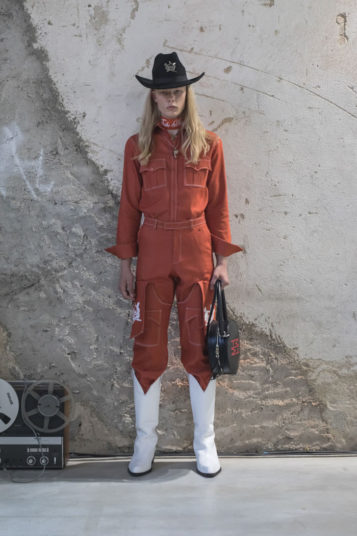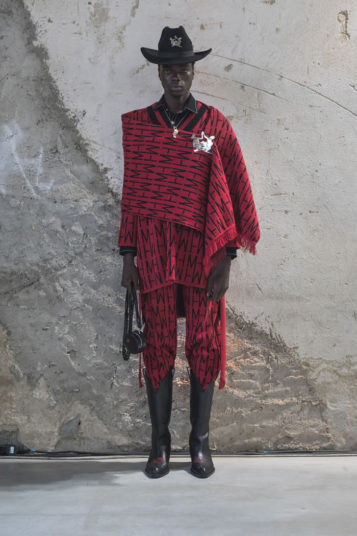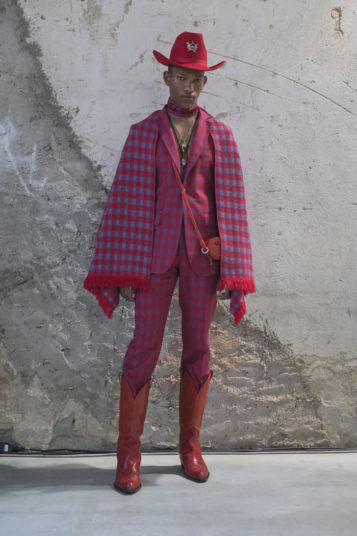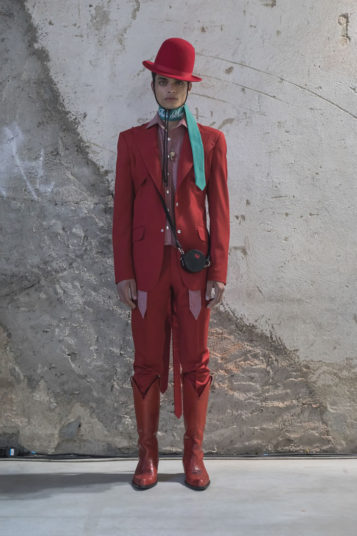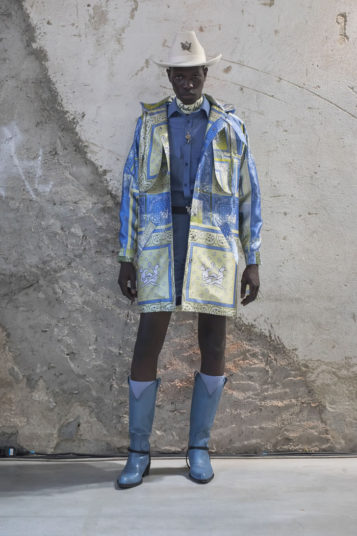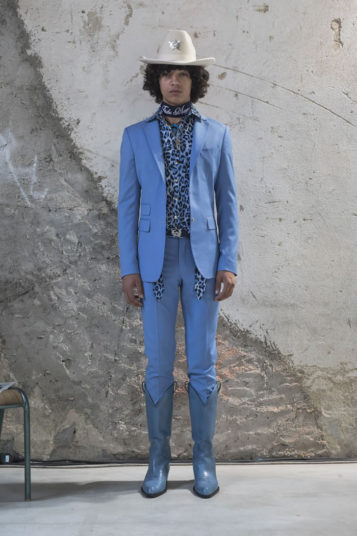It was held in a roughly bricked building at the edge of the castellated walls of the ancient fortress that is Pitti’s chief home, and which for this 100th edition is probably at around 30% of its pre-pandemic levels, in terms both of guests and exhibitors.
This is a Pitti, however, which feels crackling with potential and dynamism—not half empty, but half full—and this Magugu show encapsulated that.
It was the first time I’ve seen this designer’s work since his winning installation at the International Fashion Showcase chaired by Runway’s supreme talent spotter, Sarah Mower, in February 2019. Since then he has built a rich, deep, and distinct design vocabulary that was powerfully articulated today.
As so often at Pitti, this show wasn’t your usual walk back and forth. Most of the models were seated back to back in a space meant to recreate the waiting room of a police station. Every once in a while they would all raise an old-fashioned whistle to their lips and blow.
Then one of them would stand up, circle his colleagues, and stalk past the payphone on which you could make that desperate call to your lawyer into an interrogation room. Here he would sit, with an old 8-track recorder rolling and cigarette smoke coiling out of an ashtray, while four more models watched him from behind a mirrored observation window.
Pre-recorded testimonies from whistleblowers in historic government and corporate corruption scandals relating to South Africa were played over the PA.
It went on for quite some time, and I got the gist, so I headed backstage to track down Magugu.
He was watching via a production monitor, and when asked for a chat gave possibly the most charming answer any designer ever has: “Of course! But would you mind if I go and take my bow first?”
When he returned he explained he had worked with and been inspired by a journalist named Mandy Wiener who wrote a book, Whistleblowers, that recounts the stories of these individuals who, often at great personal cost, had exposed various multi-million Rand lootings.
In a nation where youth unemployment stands at 75%, endemic corruption serves only to limit their opportunities still further.
This toxic negative cycle was finely illustrated in a printed newspaper (remember them?) that was packed with bravely seditious articles by journalists from the Daily Maverick, as well as political cartoons by Zapiro.
“Education suffers, so many things suffer because of greedy actions of these powerful people,” said Magugu. “And a lot of the politicians that are mentioned in the book often escaped being interrogated, so I thought it was very interesting to place these words in that setting so people could imagine what that might look like.”
Magugu’s theme was extremely relevant to his homeland: It was only two days ago that former SA president Jacob Zuma was ordered to turn himself in for an 18 month prison sentence after refusing to face an anti-corruption commission investigating his alleged involvement in corruption while in power.
There was a power at play in this collection too, which echoed the Peacock Revolution part-catalyzed by that original 1952 Brioni show through its use of a sartorial silhouette emphasized by pulsating color.
The suit is the garment of male power, and often the ‘respectable’ facade of male power when it is misused: Here Magugu applied his own codes to that silhouette by imposing the almost hyper-real Masai check, jacquards lifted from Zapiro’s scathing illustrations of hypocrisy, his own monogram, and his rather wonderful logo of two seated sisters holding hands.
The tailoring itself was twisted and de-conventionalized through strapping details and extended lengths that contributed still further to the apparent sensuality and sexiness of the pieces.
The models all wore felt stetsons or bowlers on their heads and cowboy boots—some with spurs shaped after the sitting sisters—which illustrated another sly play on the conventional imagery of power and the reductive dichotomy of goodie vs. baddie.
As well as being a highly engaging conversationalist, Magugu is—as previously mentioned—possessed of that distinct vocabulary in the articulation of the urges and insight that drive his design.
This collection was finely produced and you could see it happily living in a ‘luxury’ context. It was also, and more importantly, a collection that felt vital.
COLLECTION

